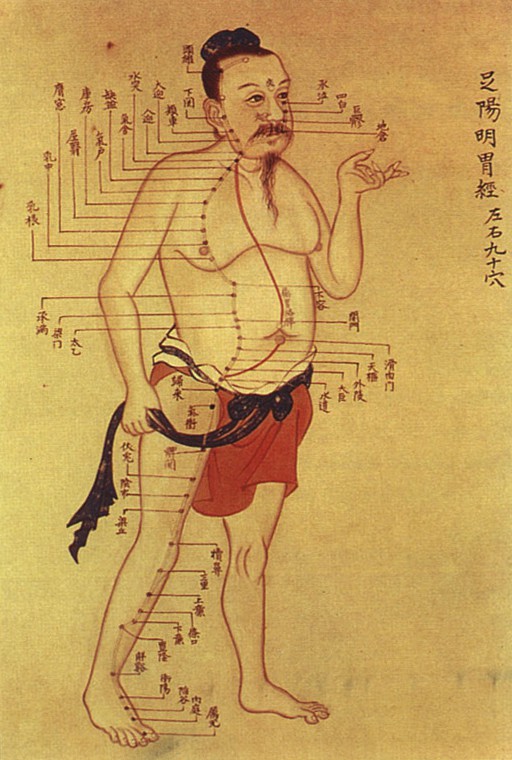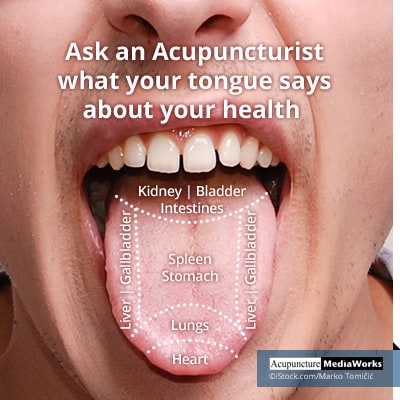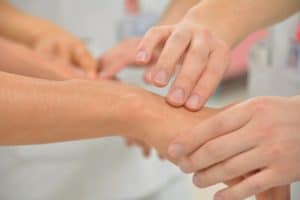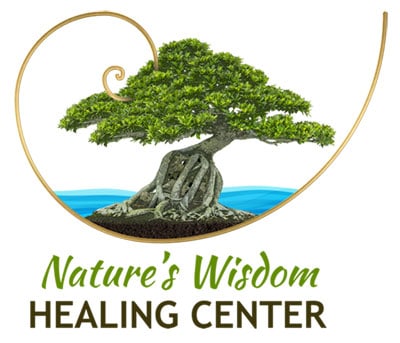
Acupuncture is a gentle, safe, drug-free treatment. It has been helping humanity for many thousands of years. Did you know that ancient acupuncture needles made of stone and bone were found in China that are 4,000 to 10,000 years old? Bamboo was another historical material used to make acupuncture needles. Today, acupuncturists use disposable needles made from stainless steel. Modern acupuncture dates to the Ming Dynasty (1368-1644), over 600 years ago! The ancient Chinese medical text “Huang Di Nei Jing – The Yellow Emperor’s Classic of Internal Medicine” was written during the Ming Dynasty and various translations of this ancient knowledge is studied by acupuncture physicians and students in acupuncture schools today. Acupuncture is much more than placing needles in the body. Acupuncture is a time honored, historically documented, and modern researched health care system that works to restore the normal energy flow and restore and maintain good health.
A great acupuncture physician is really a good detective with the discerning ability to detect the disruption of the normal flow of energy of the body and make a treatment plan which includes acupuncture to support the correction of the energy flow in the body resulting in restored health. You see, inserting the needles properly is a skill; knowing where, why, and how to place the needles is a more complicated task that requires education, experience, and intuition. 
To figure out the diagnosis and treatment plan, the acupuncture physician uses several methods of information gathering. One historical method is called the “Ten Questions Song.” This method dates to late in the Ming Dynasty (1563-1640) and is accredited to the acupuncture physician, Jie-bin Zhang. The list below includes the idea of the questions, not the exact quotes from the late Dr. Zhang as there are several translations of his list. These questions quickly help gather general health information.
- Questions about the main health problem.
- Questions about what makes problem better or worse.
- Questions about body temperature and sweating.
- Questions about pain.
- Questions about bowel movements and urination.
- Questions about eating and thirst.
- Questions about heart, chest and breathing.
- Questions about eyes, ears, nose, and throat.
- Questions about emotions.
- For women, about cycle: for men, about energy; for children, about digestion and childhood illnesses.

Observation of the tongue is another way that acupuncture physicians gather information. The tongue is an “organ” that we can see, and it tells a story of what is going on in your body. The acupuncturist looks at the tongue coat, color, shape, and markings.
 Yet another information gathering tool is pulse diagnosis: feeling the rate, quality, and strength of blood flow through the vessels located on the wrists. The information gathering stage is the Acupuncture Exam which leads to a Traditional Chinese Medicine diagnosis which determines the treatment plan. The treatment plan is also individualized and may include acupuncture or acupressure, other adjunct therapies including moxibustion (heat), cupping (increasing circulation), herbal medicine, and dietary guidelines and whole food supplements.
Yet another information gathering tool is pulse diagnosis: feeling the rate, quality, and strength of blood flow through the vessels located on the wrists. The information gathering stage is the Acupuncture Exam which leads to a Traditional Chinese Medicine diagnosis which determines the treatment plan. The treatment plan is also individualized and may include acupuncture or acupressure, other adjunct therapies including moxibustion (heat), cupping (increasing circulation), herbal medicine, and dietary guidelines and whole food supplements.
 Florida Board Certified Acupuncturist, Mary Cetan, has the knowledge and the experience to give a professional Traditional Chinese Medicine exam, determine the Traditional Chinese Medicine diagnosis, create the treatment plan, place the acupuncture needles gently and purposefully, prescribe the correct herbal formulas and nutrient rich supplements to facilitate the restoration and maintenance of best health. Along with Traditional Chinese Medicine, Mary Cetan, utilizes Nutriton Response TestingR, a clinically proven system to help pinpoint the root cause of illnesses and determine the specific nutrients and herbal formulas to support self-healing.
Florida Board Certified Acupuncturist, Mary Cetan, has the knowledge and the experience to give a professional Traditional Chinese Medicine exam, determine the Traditional Chinese Medicine diagnosis, create the treatment plan, place the acupuncture needles gently and purposefully, prescribe the correct herbal formulas and nutrient rich supplements to facilitate the restoration and maintenance of best health. Along with Traditional Chinese Medicine, Mary Cetan, utilizes Nutriton Response TestingR, a clinically proven system to help pinpoint the root cause of illnesses and determine the specific nutrients and herbal formulas to support self-healing.
To get started as a new patient:
- Schedule your New Patient Exam & Treatment with Mary Cetan.
- Schedule a complimentary chat to get your questions answered.
- Fill out the form below to help us learn more about you and how we can help you.


